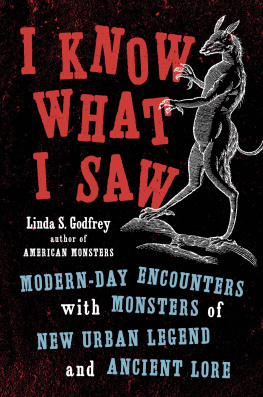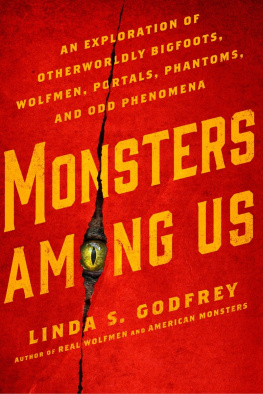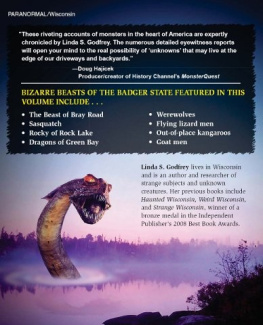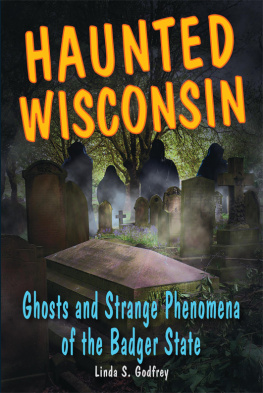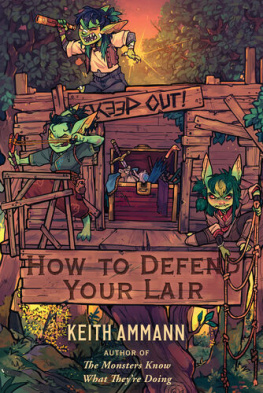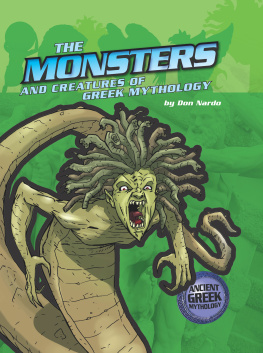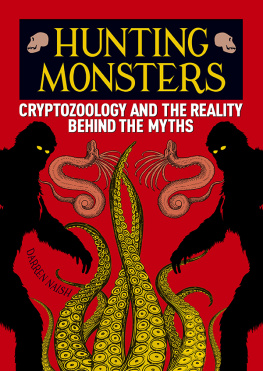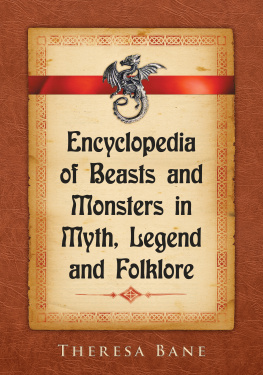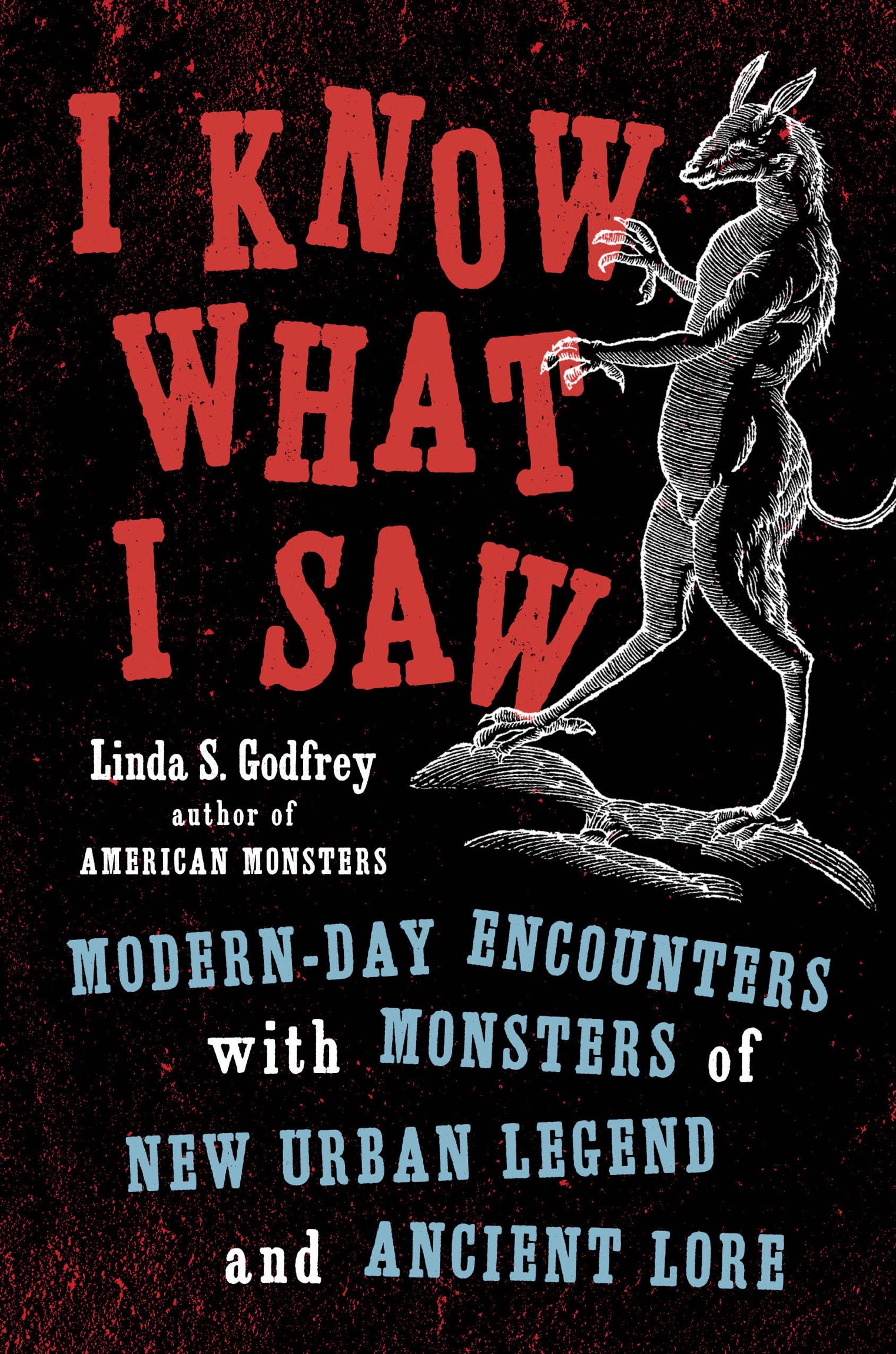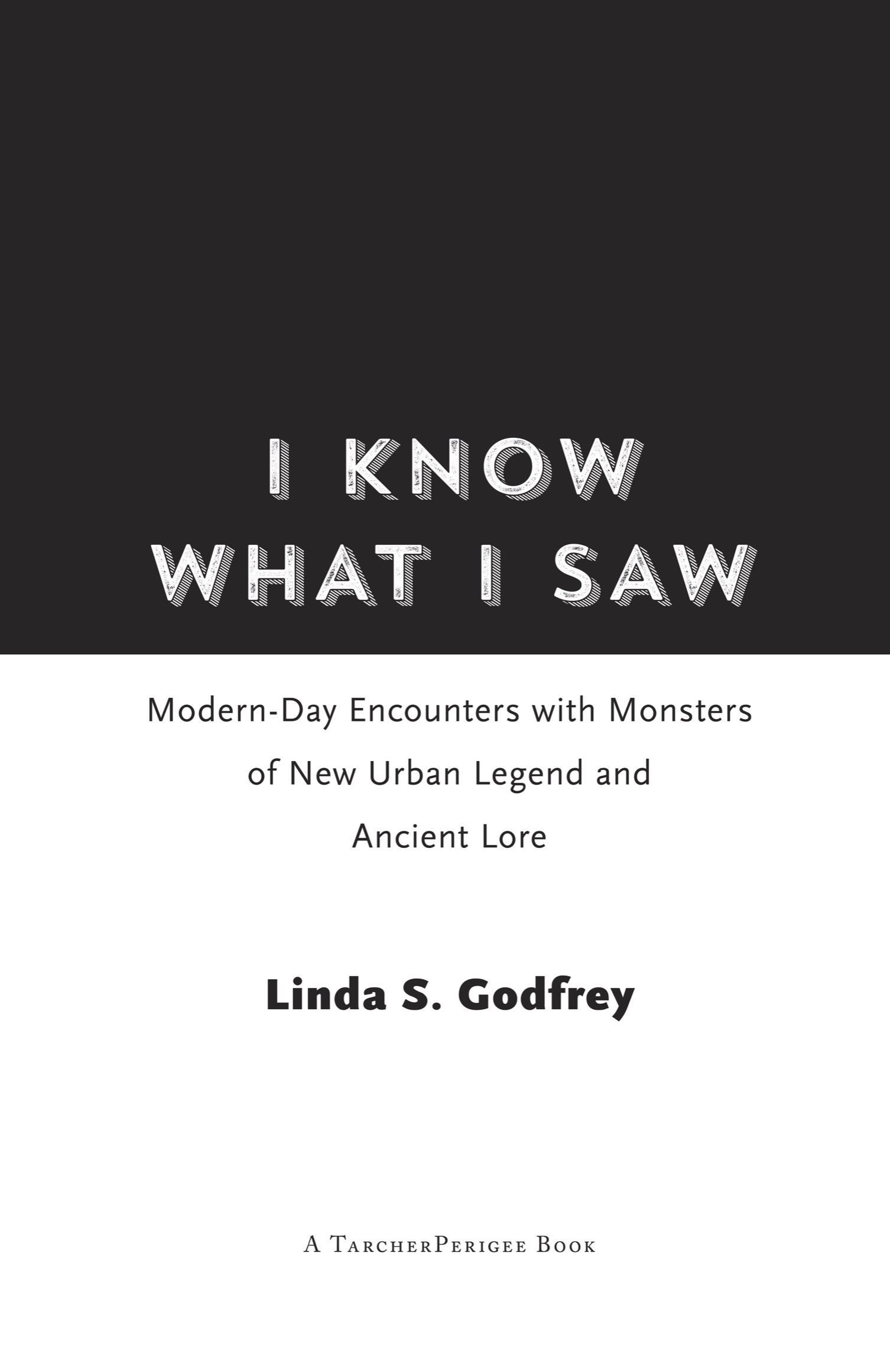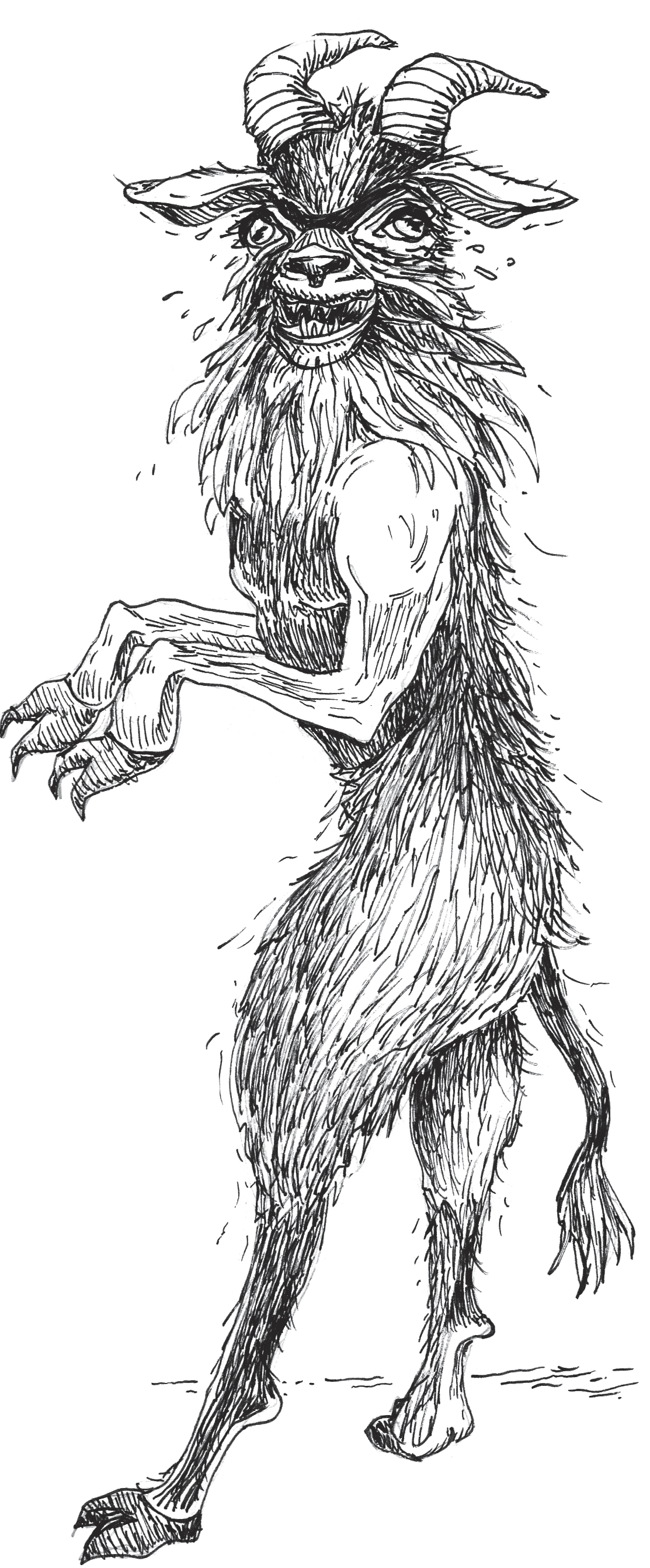Copyright 2019 by Linda S. Godfrey
Penguin supports copyright. Copyright fuels creativity, encourages diverse voices, promotes free speech, and creates a vibrant culture. Thank you for buying an authorized edition of this book and for complying with copyright laws by not reproducing, scanning, or distributing any part of it in any form without permission. You are supporting writers and allowing Penguin to continue to publish books for every reader.
TarcherPerigee with tp colophon is a registered trademark of Penguin Random House LLC.
Illustrations by Linda S. Godfrey
Names: Godfrey, Linda S., author.
Title: I know what I saw : modern-day encounters with monsters of new urban legend and ancient lore / Linda S. Godfrey.
Description: New York : TarcherPerigee, 2019. | A TarcherPerigee book. | Includes bibliographical references and index.
Identifiers: LCCN 2019005259| ISBN 9780143132806 (hardcover) | ISBN 9780525504696 (ebook)
Subjects: LCSH: MonstersFolklore.
Some names and identifying characteristics have been changed to protect the privacy of the individuals involved.
This book is dedicated to Steven Stanek, mystery cat hunter, investigator, and recorder extraordinaire, who has toiled quietly for decades on his quest, and whose generous participation made the mystery cats chapter possible.
Introduction
Which Came First, the Legend or the Beast?
In cryptozoology we are studying legends. Legends are the smoke above the fire.
Loren Coleman, Cryptozoologist, 2018
I N D ECEMBER 1991, I trudged for days around a frosty corner of southeast Wisconsin to interview people who claimed to have seen what they said looked like a fur-covered werewolf on a rural byway known as Bray Road, just outside of the small city of Elkhorn. And yes, they did say werewolf, and no, that did not send me running for silver bullets. Looking into topics of local interest was my job as a reporter for the countys weekly newspaper, The Week, based in Delavan, Wisconsin, so I was trying to keep an open mind. It wasnt easy. Area residents were saying they had seen what looked like a large wolf walking or running on its hind legs, eating chunks of road-killed animals held in its upturned paws, and generally acting in ways that normal eastern gray wolves were not known to act. Moreover, there hadnt been a known population of wolves breeding in and inhabiting southeastern Wisconsin for many decades. None of it seemed likely.
The authors rendition of a goat man
As I listened to stories of encounter after encounter, however, told by what seemed to be sincere and sober citizens, my mind reached for possible explanations of impossible claims. Were eyewitnesses seeing an actual wolf gone bipedal for some odd reason? Most of the alternatives I could conjure up also seemed unlikely. I had heard folktales of other manimals, such as Marylands Goat Man, that had supposedly become mutant monsters due to genetic experiments. Folktales and legends are generally not considered proof of anything, however.
There was also speculation that the creature could be something ghostly, more akin to the spectral black hounds of the British Isles than to a Hollywood-style human with fangs and fur. I even had to consider the chance that there was no real creature, no true sightings, just a hoax perpetrated by unknown jokers, perhaps.
After all, the long, cold winters of the Dairy State have been blamed for all sorts of odd behavior among its residents. Certain Wisconsinites have gained notoriety for activities ranging from the sublime to the shocking: from late-blooming, self-taught artists who spend long evenings by the fire creating visionary sculpture from rusty metal and concrete, to cannibalistic serial killers Ed Gein of Plainfield and Milwaukees Jeffrey Dahmer. Admittedly, Gein and Dahmer were motivated by much more than ice and scant daylight, since psychological derangement figured prominently in each case. But the peculiar nature of their crimes was seriously weirdwhat I call bad weird, as opposed to good weirdin the extreme.
After listening to the Bray Road witnesses in person, however, I finally decided that no matter what the origin of the mystery creature sightings, the stories had already spread far enough locally to have reached campfire-tale status. That meant the phenomenon Id dubbed The Beast of Bray Road could be considered folklore in the making. I realized Id been given a rare opportunity to observe and document the birth of a new legend, and I felt obliged to record whatever I found for future reference.
Back in 1992, the likeliest scenario to my mind was that the upright creatures were just what they looked like: flesh-and-blood wolves or wolf-dog hybrids that were able to walk upright and often did. The ability to walk on hind legs, or bipedalism, is not a supernatural act for animals, but it is unusual. When seen in the wild, bipedal locomotion usually indicates an injured forelimb. Given healthy limbs, and YouTube videos of dancing dogs aside, quadrupeds rarely live their lives in a vertical posture, since their skeletal frames are not designed to support their whole weight on their hind legs.
And yet, many who witnessed the upright canine creatures thought there was also something otherworldly about them... some kind of knowing, uncanny intelligence in their glowing, yellow eyes. As famed Bigfoot researcher and author Ivan Sanderson said in his book Abominable Snowmen: Legend Come to Life, A lot of myths are straight history; a lot of history is pure myth.
It seemed obvious to me in those early days that Id have to look at many more reports to have any hope of understanding anything at all about the creatures and why they were being sighted. Luckily, the reports continued to roll in from all over the United States, Canada, and other places, even though I hadnt been actively soliciting them, and after ten years or so I began to publish them online and in my books.
Alas, interesting as these reports were, I have found it is much easier to record encounters than to understand them. Twenty-six years of chasing monsters later, it still comes down to this: Are these sightings simply a combination of mistaken species of known animals, truly undiscovered animals, hoaxes, and coincidence, or are they somehowperhaps through the power of myth and legendsintertwined with the human mind? Some researchers suspect these creatures spring from another reality, and that they use the human mind or spirit to project themselves into our world as perceivable beings. Many Native American beliefs hold the more specific view that Sasquatch, dogmen, and other such creatures use freshwater springs as portals between the spirit world and our own. According to the online Hok Encyclopedia, the lakes surrounding Wisconsins state capital, Madison, all serve the spirit world as trans-realm conduits. It states, to cite just one example, The old Winnebago Indian name for Lake Wingra was

